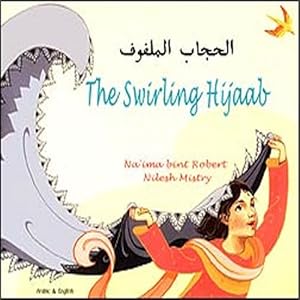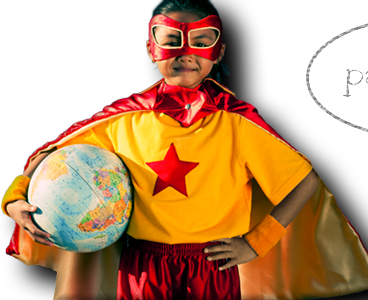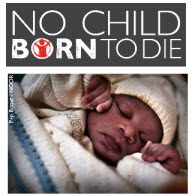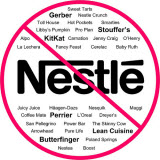Tuesday
Mar152011
Islamic Children's Books
 Tuesday, March 15, 2011
Tuesday, March 15, 2011
This is March, which for me means I am working 12 to 14 hour days. It is part of my balance over time, not every day philosophy and reality. That means that I don't have as much time to blog, but don't fret! I have several amazing guest bloggers lined up this month and will also sneak in a few posts of my own (I can't help it...even when I'm busy, the words need to get out sometimes!). Today, I'd like to introduce you to the blogger known as WoodTurtle. I was thrilled when I discovered her blog last summer because she so clearly demonstrates and illustrates how it is possible to be a Muslim and a feminist (something too many people assume is impossible).
Eryn beat her chubby little arm against my back in excitement as we wandered through the bazaar. Row after row, vendors offered delights for the entire family: balloons; flashing baubles; raw honey; bright and pungent, exotic spice mountains; cheddar cheese stuffed dates; almond stuffed dates; golden and sugary baklava; Arabic language DVDs of The Message, possibly the most popular movie ever made about the story of Islam; red and black henna for dyeing hair and skin; face painting for the kids; black, impressive abayas with shimmering, sequinned designs; heady, musk-scented, oil-based perfumes, and adorable baby clothes decorated with familiar Islamic slogans, “May peas be with you,” and “100% Halaal.”
Men, women, groups of families moved fluidly among the vendors – traditional lines of gender segregation were ignored while people negotiated the crowd. Though, a large group of men stood around the meat shawarma vendor, and double the amount of women haggled at the hijab table, while the matrimonial table stood empty. Arabic, Farsi, Urdu and Turkish overpowered any notes of English that floated around my hijab. The organizers successfully created a slice of Islamic culture in the centre of suburbia.
While hemming and hawing over a red and gold, mirror-embossed throw pillow, the Hubby called me over to the book section. He was holding an Arabic alphabet mat puzzle in one hand, and a mosque building-block kit in the other. I went straight for the baby books.
The books, articles and advice blogs I devoured in early motherhood have made me the family expert on my pregnancy, labour and delivery, breastfeeding, and now for Eryn-specific child rearing. Very quickly I’ve learned to become a fiscally and morally informed consumer, since motherhood leads me to sections of clothing, food and toy stores I would have not have previously considered going to. My expert eye can gauge the amount of preservatives contained in processed foods at 20 paces and I can stealthily repurpose stereotypical gendered gifts without blinking. It’s the same with books.
For the majority of books currently sitting in Eryn’s book nook, I’ve run them past my personal criteria list, making sure they include most of the elements of: strong female characters, diversity, pro-breastfeeding, fat acceptance, social justice, avoiding gender binaries and positive character building. Seeing that she’s only 18 months old, our current rotation includes: The Paper Bag Princess, Olivia the Pig, I Like Myself!, Scaredy Squirrel, the Very Hungry Caterpillar and several multi-language board books on babies, children’s activities, world cultures and animals.
So far, our teaching of Islamic values has simply been organic. Eryn watches us when we pray and joins in when she wants. She knows I put on hijab before we leave the house, and she hands it to me when she wants to get going. She says, “Allah” whenever she passes the Qur’an or wants to listen to her Islamic-inspired music, and I say bismillah (in the name of God) before she eats or nurses. But that’s about it. We’ve never actually sat down with her and instructed her on pictures of mosques, people in prayer, the Ka’abah in Mecca, women in hijab, successfully told prophetic stories from the Qur’an or Bible or dwelt on any other concepts that she’d identify as “Islamic.”
So, it never dawned on me to look at Islamic books. And the first time I did, I have to admit that I was a little disappointed.
First, there was an overwhelming amount of male main characters – and every female character was in hijab. All. the. time. Even at home when it’s traditionally not worn. I laughed when I noticed that all of the mother characters got to change clothes, but never removed their hijab – as if the illustrators found the idea sacrilegious to show mama going to bed in anything but her dressing gown and full hijab. And while I understand that Islamic books for children are attempting to present Islamic concepts and cultures as a norm for children, I don’t agree that it’s necessary to illustrate pre-schoolers in hijab.
There was also an overwhelming assumption of traditional gender roles. Mama stayed at home and Baba went to work. Big brother went to the mosque, little sister stayed home. It’s already problematic that women are brought up to believe that it’s better for them to pray at home, instead of becoming invested resources and active players at the mosque – so I was quite shocked to see it subtly promoted in children’s literature as well. Now, staying at home is something I won’t entirely rule out for our family, but it’s not our current reality, nor is it reflective of every mother’s aspirations or for those who have to work out of necessity. There are plenty of stay at home Babas – my husband’s family has two!
Occupations for aspiring female characters seemed to be limited to teacher or doctor. I kept wondering where all of the strong female characters from Islamic history had disappeared to. The businesswomen, the poets and writers, the engineers, the women who lead armies into war. Where were the books relying on them?
Then there was the preachiness found in some of the older children’s books. Books intending to teach 5 years olds how to make ritual ablutions before prayer, or encouraging them to fast, were littered with secondary dialogue on how to be a “good Muslim” or having characters shouting, “I love being a Muslim!” from the rooftops. I bristled each time. Isn’t that subjective? What makes a good Muslim? A good person? Am I being too harsh? I know Muslims are in a minority in North America, but is it really necessary to be so exclusive?
Many of these books also took place in an Arabian setting, or relied heavily on Arabic terminology outside of Islamic phrases. This doesn’t always work well for my family situation, which would also involve Eryn identifying with East African and German culture, and seeing Islam within a North American context.
The last straw came when I saw that my old favourite, The Children’s book of Salah (Prayer) had been reissued. I bought the book almost 10 years ago to learn how to pray. It very simply explains the ritual prayer in pictures, and transliterates the Arabic necessary to complete the prayer into English letters. Now they were offering The Boy’s book of Salah, in blue – and The Girl’s book of Salah, in pink. I guess there’s a market for this, but it’s not for me.
I was initially discouraged, and recognized that perhaps these were simply the books that this particular vendor had on order. So I did what any other market-power mother would do. I asked around.
 And was soon introduced to the likes of Hilmi the Hippo who learns important life lessons like how not to lie, how not to be vain, and even how to deal with death – all while peppering his hippo speech with familiar Islamic phrases and wandering the Serengeti. There’s the Allah the Maker series which uses a diverse group of families who are thankful to God as a creator, exposing toddlers to the senses of touch, taste, and hearing through whimsical rhyming about every day Muslim and North American objects.
And was soon introduced to the likes of Hilmi the Hippo who learns important life lessons like how not to lie, how not to be vain, and even how to deal with death – all while peppering his hippo speech with familiar Islamic phrases and wandering the Serengeti. There’s the Allah the Maker series which uses a diverse group of families who are thankful to God as a creator, exposing toddlers to the senses of touch, taste, and hearing through whimsical rhyming about every day Muslim and North American objects.
Finally, I found my favourite at the local library. The Swirling Hijab is a lovely bi-lingual, large-print book (available in several language combinations, like English/Arabic and English/Portuguese) about a girl who imaginatively explores her world through her mother’s black hijab. She captains a ship at sea, becomes a warrior Queen (not a princess!), makes a Bedouin tent, has a tea party and thinks that covering her “mom as a part of her faith is what the hijab does best.”
I know that there’s so much more available, especially for the preschool – grade three ages, but I think these books are a good place to start exposing Eryn to her Islamic heritage. I do believe that it’s important to have some learning material that’s tailored to Muslim children – but for my family, it’s also important that these books include the value checks that I apply to all of our reading material.
As a woman who owns a niqab monogrammed with sparkly sequins, WoodTurtle writes frequently on genderized Islamophobia and works toward dispelling myths and stereotypes about women in Islam for both Muslims and non. She writes about her feminism and motherhood over at WoodTurtle. You can contact her at w00dturtl3@gmail.com or follow her on Twitter @woodturtle_blog.
Islamic Children's Books
Eryn beat her chubby little arm against my back in excitement as we wandered through the bazaar. Row after row, vendors offered delights for the entire family: balloons; flashing baubles; raw honey; bright and pungent, exotic spice mountains; cheddar cheese stuffed dates; almond stuffed dates; golden and sugary baklava; Arabic language DVDs of The Message, possibly the most popular movie ever made about the story of Islam; red and black henna for dyeing hair and skin; face painting for the kids; black, impressive abayas with shimmering, sequinned designs; heady, musk-scented, oil-based perfumes, and adorable baby clothes decorated with familiar Islamic slogans, “May peas be with you,” and “100% Halaal.”
Men, women, groups of families moved fluidly among the vendors – traditional lines of gender segregation were ignored while people negotiated the crowd. Though, a large group of men stood around the meat shawarma vendor, and double the amount of women haggled at the hijab table, while the matrimonial table stood empty. Arabic, Farsi, Urdu and Turkish overpowered any notes of English that floated around my hijab. The organizers successfully created a slice of Islamic culture in the centre of suburbia.
While hemming and hawing over a red and gold, mirror-embossed throw pillow, the Hubby called me over to the book section. He was holding an Arabic alphabet mat puzzle in one hand, and a mosque building-block kit in the other. I went straight for the baby books.
The books, articles and advice blogs I devoured in early motherhood have made me the family expert on my pregnancy, labour and delivery, breastfeeding, and now for Eryn-specific child rearing. Very quickly I’ve learned to become a fiscally and morally informed consumer, since motherhood leads me to sections of clothing, food and toy stores I would have not have previously considered going to. My expert eye can gauge the amount of preservatives contained in processed foods at 20 paces and I can stealthily repurpose stereotypical gendered gifts without blinking. It’s the same with books.
For the majority of books currently sitting in Eryn’s book nook, I’ve run them past my personal criteria list, making sure they include most of the elements of: strong female characters, diversity, pro-breastfeeding, fat acceptance, social justice, avoiding gender binaries and positive character building. Seeing that she’s only 18 months old, our current rotation includes: The Paper Bag Princess, Olivia the Pig, I Like Myself!, Scaredy Squirrel, the Very Hungry Caterpillar and several multi-language board books on babies, children’s activities, world cultures and animals.
So far, our teaching of Islamic values has simply been organic. Eryn watches us when we pray and joins in when she wants. She knows I put on hijab before we leave the house, and she hands it to me when she wants to get going. She says, “Allah” whenever she passes the Qur’an or wants to listen to her Islamic-inspired music, and I say bismillah (in the name of God) before she eats or nurses. But that’s about it. We’ve never actually sat down with her and instructed her on pictures of mosques, people in prayer, the Ka’abah in Mecca, women in hijab, successfully told prophetic stories from the Qur’an or Bible or dwelt on any other concepts that she’d identify as “Islamic.”
So, it never dawned on me to look at Islamic books. And the first time I did, I have to admit that I was a little disappointed.
First, there was an overwhelming amount of male main characters – and every female character was in hijab. All. the. time. Even at home when it’s traditionally not worn. I laughed when I noticed that all of the mother characters got to change clothes, but never removed their hijab – as if the illustrators found the idea sacrilegious to show mama going to bed in anything but her dressing gown and full hijab. And while I understand that Islamic books for children are attempting to present Islamic concepts and cultures as a norm for children, I don’t agree that it’s necessary to illustrate pre-schoolers in hijab.
There was also an overwhelming assumption of traditional gender roles. Mama stayed at home and Baba went to work. Big brother went to the mosque, little sister stayed home. It’s already problematic that women are brought up to believe that it’s better for them to pray at home, instead of becoming invested resources and active players at the mosque – so I was quite shocked to see it subtly promoted in children’s literature as well. Now, staying at home is something I won’t entirely rule out for our family, but it’s not our current reality, nor is it reflective of every mother’s aspirations or for those who have to work out of necessity. There are plenty of stay at home Babas – my husband’s family has two!
Occupations for aspiring female characters seemed to be limited to teacher or doctor. I kept wondering where all of the strong female characters from Islamic history had disappeared to. The businesswomen, the poets and writers, the engineers, the women who lead armies into war. Where were the books relying on them?
Then there was the preachiness found in some of the older children’s books. Books intending to teach 5 years olds how to make ritual ablutions before prayer, or encouraging them to fast, were littered with secondary dialogue on how to be a “good Muslim” or having characters shouting, “I love being a Muslim!” from the rooftops. I bristled each time. Isn’t that subjective? What makes a good Muslim? A good person? Am I being too harsh? I know Muslims are in a minority in North America, but is it really necessary to be so exclusive?
Many of these books also took place in an Arabian setting, or relied heavily on Arabic terminology outside of Islamic phrases. This doesn’t always work well for my family situation, which would also involve Eryn identifying with East African and German culture, and seeing Islam within a North American context.
The last straw came when I saw that my old favourite, The Children’s book of Salah (Prayer) had been reissued. I bought the book almost 10 years ago to learn how to pray. It very simply explains the ritual prayer in pictures, and transliterates the Arabic necessary to complete the prayer into English letters. Now they were offering The Boy’s book of Salah, in blue – and The Girl’s book of Salah, in pink. I guess there’s a market for this, but it’s not for me.
I was initially discouraged, and recognized that perhaps these were simply the books that this particular vendor had on order. So I did what any other market-power mother would do. I asked around.
 And was soon introduced to the likes of Hilmi the Hippo who learns important life lessons like how not to lie, how not to be vain, and even how to deal with death – all while peppering his hippo speech with familiar Islamic phrases and wandering the Serengeti. There’s the Allah the Maker series which uses a diverse group of families who are thankful to God as a creator, exposing toddlers to the senses of touch, taste, and hearing through whimsical rhyming about every day Muslim and North American objects.
And was soon introduced to the likes of Hilmi the Hippo who learns important life lessons like how not to lie, how not to be vain, and even how to deal with death – all while peppering his hippo speech with familiar Islamic phrases and wandering the Serengeti. There’s the Allah the Maker series which uses a diverse group of families who are thankful to God as a creator, exposing toddlers to the senses of touch, taste, and hearing through whimsical rhyming about every day Muslim and North American objects.Finally, I found my favourite at the local library. The Swirling Hijab is a lovely bi-lingual, large-print book (available in several language combinations, like English/Arabic and English/Portuguese) about a girl who imaginatively explores her world through her mother’s black hijab. She captains a ship at sea, becomes a warrior Queen (not a princess!), makes a Bedouin tent, has a tea party and thinks that covering her “mom as a part of her faith is what the hijab does best.”
I know that there’s so much more available, especially for the preschool – grade three ages, but I think these books are a good place to start exposing Eryn to her Islamic heritage. I do believe that it’s important to have some learning material that’s tailored to Muslim children – but for my family, it’s also important that these books include the value checks that I apply to all of our reading material.
As a woman who owns a niqab monogrammed with sparkly sequins, WoodTurtle writes frequently on genderized Islamophobia and works toward dispelling myths and stereotypes about women in Islam for both Muslims and non. She writes about her feminism and motherhood over at WoodTurtle. You can contact her at w00dturtl3@gmail.com or follow her on Twitter @woodturtle_blog.




















Reader Comments (14)
[...] Eryn | Tags: books, Islam | Leave a Comment Annie @ PhD in Parenting asked me to write a guest post as a part of her March lineup of guest bloggers. I’ve previously spoken about what an amazing [...]
I keep trying to come up with an intelligent comment for this, because it was a great read, but all I've got is that it's a reminder that feminism and motherhood across cultures/religions need not look unfamiliar.
Thanks for sharing!
Wonderful! Thank you for sharing the feminist issue. I've also now been pointed to some books I'll seek out for my (Christian) children to broaden their horizons and round out their book shelf and for the students in my classroom, many of whom are Muslim and need to see themselves reflected more often in the reading material I can provide them at school.
Thank you for this! I will look for some of these books when my 19 months expands his library (for now, it's pretty much nothing but Dr. Seuss, which I am discovering with my son, as I did not grow up in English). Love the idea of a swirling hijab.
Fabulous post. The book of The Swirling hijab sounds gorgeous and now I must hunt it down. Though my kids are past this age, they still love to read well written and illustrated picture books from time to time. (As do I at 36)
My family are not Muslim and we live in (very white) Australia but as a bellydancer and anti-kyriarchy student I try to be respectful of other cultures and my involvement with them, and to subtly teach my son the same. That said, was super excited to find The Swirling Hijab book at the library last year - it really is very beautiful, not heavy on the religious instruction (for those of us who are not of the faith), but does show how the little girl and her mother's faith is part of their lives. Super sweet.
I'll have to keep my eyes peeled for Hilmi the Hippo! :)
That's awesome! I'm always glad to see positive islamic examples in the classroom and in libraries.
It is a nice book, isn't it? I love how it's available in so many different languages too.
Eryn has an uncle named Hilmi -- so he has extra special significance for her ;)
Thank you for your article - it was eye-opening. I was raised as a Christian though I no longer believe, and as a child I wasn't introduced to many other religions or belief systems other than my own. It wasn't until college really.
I love to talk with my children about both the things I believe (a bit of humanism a bit of naturalism), and the beliefs of other cultures and religions so they will feel more empowered to choose their own path of belief or non-belief.
I'll definitey look into the Swirling Hijab!
Thank you so much for this post. I'm Christian and my husband is Muslim, hopefully our daughter will grow up understanding both religions, which for us means presenting both in a positive but not preachy way. I really want to get her some of these books right now :-)
That's brilliant Gewnllian! So glad to hear it.
WoodTurtle: Thank you for the book recommendation! Alas, it looks like our library does not have The Swirling Hijaab, however: and so I think I will be requesting it. We live in one of the most diverse neighborhoods on the planet (only Queens is more diverse, I think), and books are one way in to seeing the world as through our neighbors' eyes. As is, of course, getting to know to our neighbors at the tot lot and supermarket and so on!
Annie: I just read your post about balance, and I like your idea of balance over time. However, when you have come out of your busy time, I would love to hear how you maintain your connection with your family through the busy times. As a freelancer, I have a variable workload (though with probably less "down" time than I or my family need, though I'm working on it), and the busy times can be quite disheartening.
AsSalamu aleykum. A new Islamic board book was published for toddlers. You can e-mail me if you are interested.
AsSalamu aleykum
This is such an important lesson for us parents to integrate our little ones with our faith at a young age and books like these really connect with kids by their fun, colorful illustrations that relate to kids and also pass on valuable stories and lessons. https://www.dawateislami.net/magazine/en